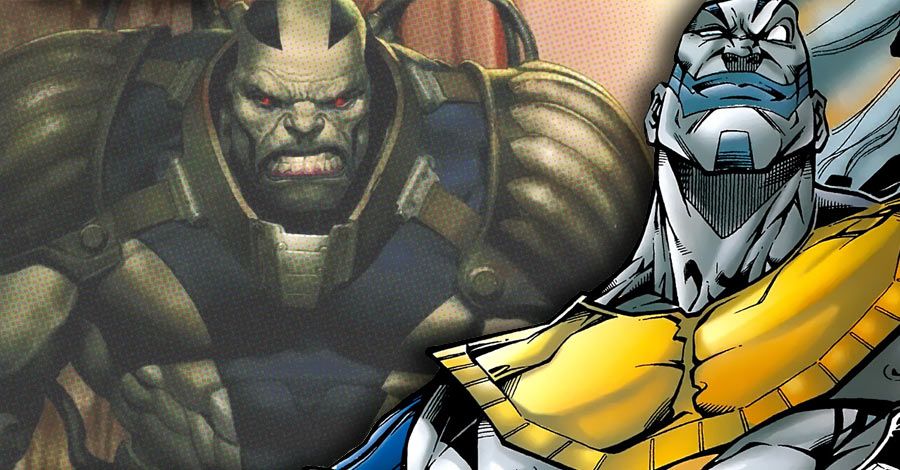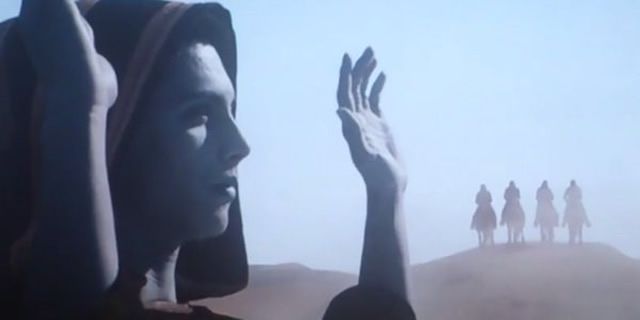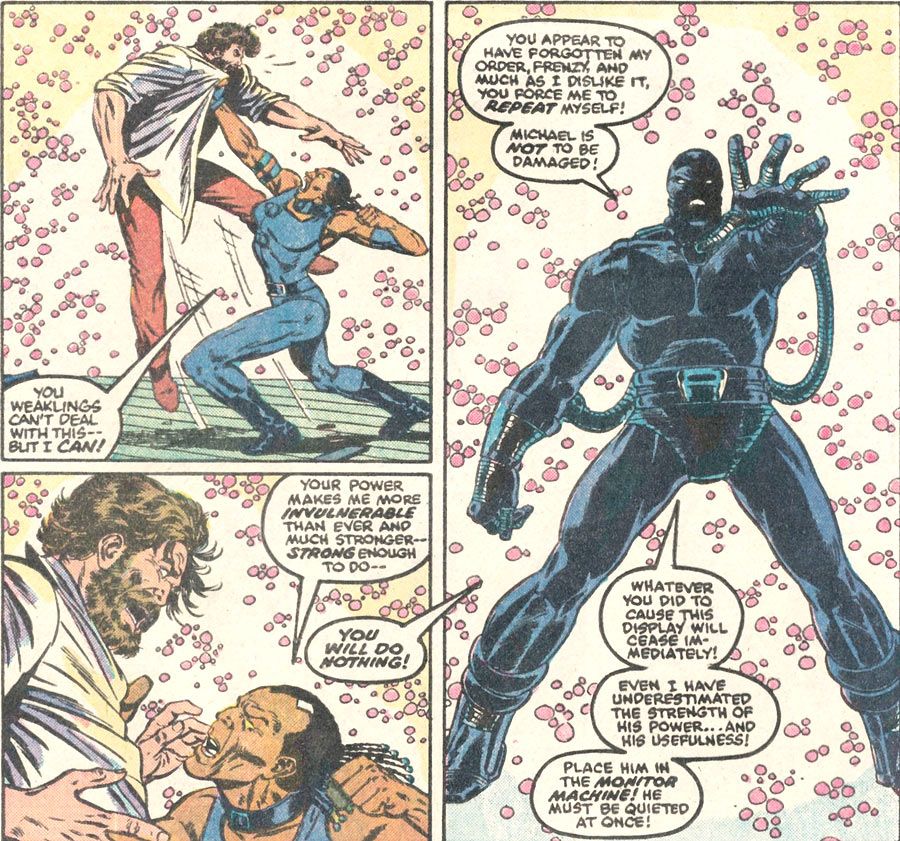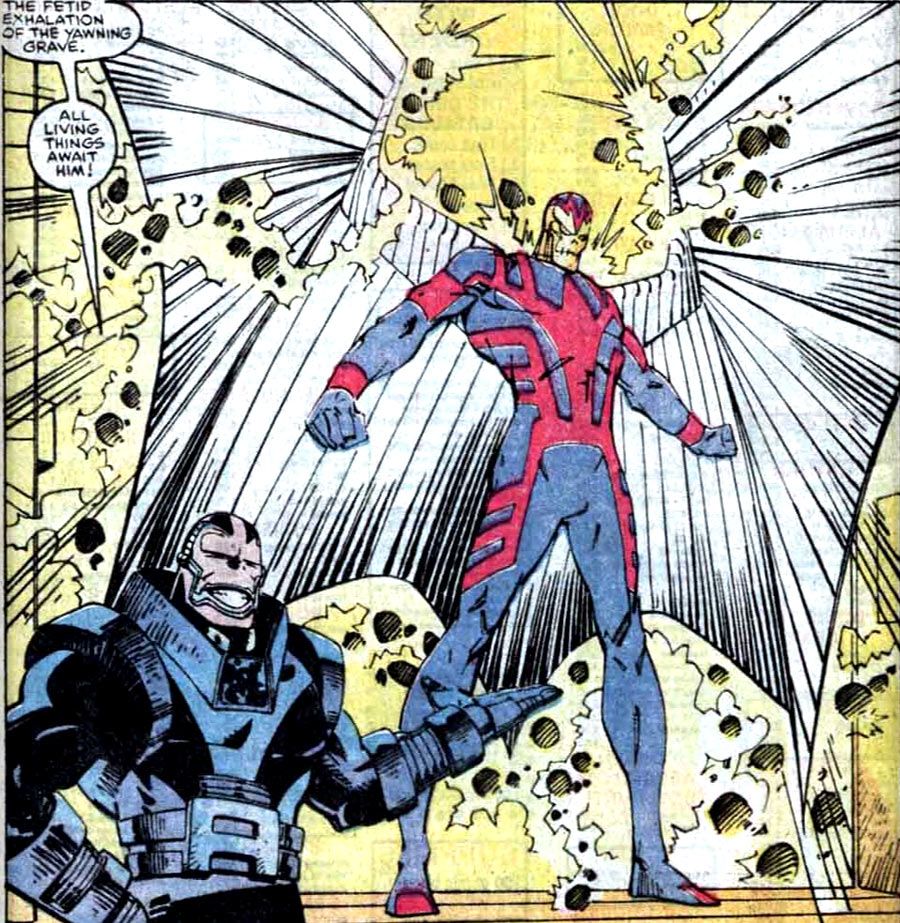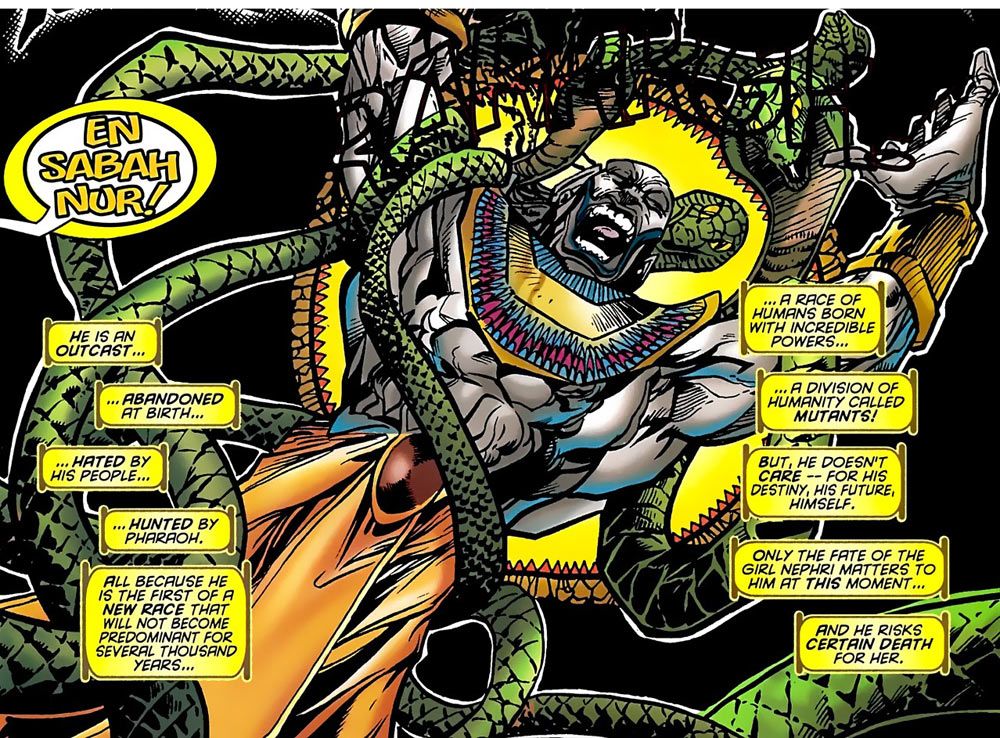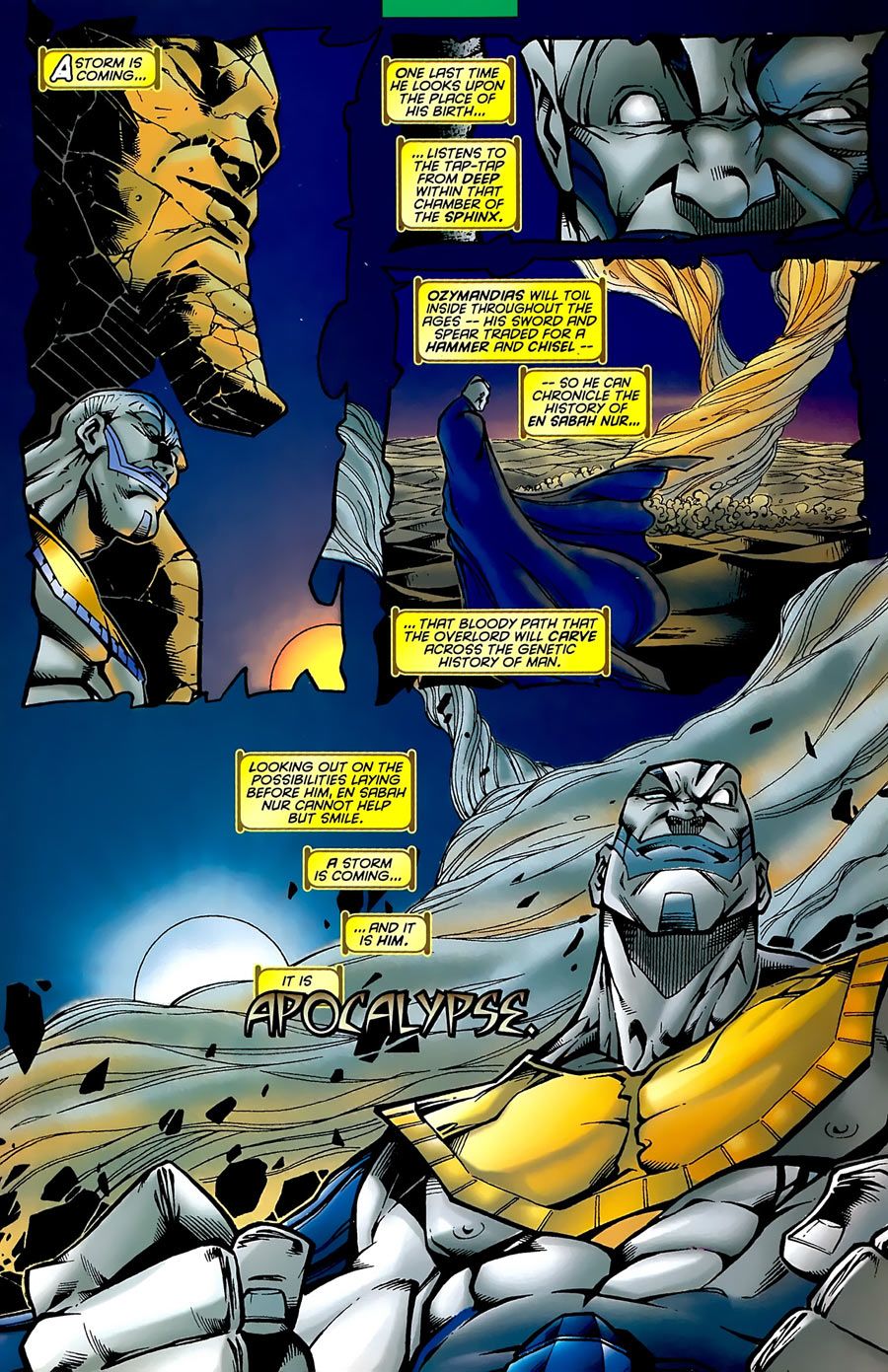Fox's hit film, "X-Men: Days of Future Past," picked up on a cue from Marvel Studios' approach to movie making by ending with a post-credits sequence teasing the next film in the franchise. Set in Ancient Egypt, the scene showed a mysterious man with grey skin and blue lines on his face using his powers to build a pyramid while masses of people chant as four mysterious beings stand in the background. What the crowd is chanting is the key, as it is the name of this young mutant, En Sabah Nur, who will eventually be known as the X-Men villain Apocalypse.
Debuting at the end of "X-Factor" #5, though the issue was written and illustrated by the creative team of Bob Layton, Jackson Guice and Joe Rubinstein, the character was actually invented by Louise Simonson who was taking over "X-Factor" with issue #6. In their first five issues, Layton and Guice had been introducing new villains for X-Factor (which, at the time, consisted of the original X-Men: Cyclops, Marvel Girl, Beast, Iceman and Angel) and eventually revealed that these new villains were all working together as the Alliance of Evil, under the control of a mysterious head villain. Layton had an established character in mind, but with Simonson taking over, she and editor Bob Harras felt that it should be a brand-new villain. Dubbed Apocalypse, the villain was designed by Simonson's husband, legendary comic book artist Walter Simonson, and introduced to the world by Guice and inker Bob McCleod.
From the start, Apocalypse was all about his obsession with the survival of the fittest, with him being the ideal example of the fittest of them all (his powers certainly set him apart -- Apocalypse has complete control over his body, allowing him to stretch, shape-shift and give himself great strength, among various other powers, including psi abilities). His plan for the Alliance of Evil was to use a mutant named Michael Nowlan, who could boost other mutants' powers, to increase the powers of all the mutants in the world so that homo superior could take over the Earth. Ultimately, Nowlan decided to sacrifice himself to stymie Apocalypse's plans.
Following Nowlan's sacrifice, Simonson was free to do whatever she wanted with Apocalypse going forward, and she and Walter Simonson (now the artist on "X-Factor") told a story that reverberates in X-Men history to this day: the introduction of Apocalypse's Four Horsemen, representing Pestilence, War, Famine and Death. The twist was that Death was a brainwashed Warren Worthington, better known as Angel of the X-Men! Apocalypse gave Angel (who recently lost his wings and was presumed dead after his private jet exploded) new, metal wings, and blue skin because, well, I guess why not? Warren's best friend, Bobby Drake (Iceman) eventually broke Angel free of Apocalypse's control, and Warren became a hero again, now using the name Archangel.
Apocalypse had one last memorable fight with X-Factor before they became members of the X-Men once again. In a battle with another team of servants (this one called the Dark Riders), Cyclops' son, Nathan, was infected by Apocalypse with a techno-organic virus. In order to save his son, Cyclops was forced to send him into the future, where Nathan grew up to become Cable -- who was trained to kill Apocalypse!
As time went by, more and more writers began to play with the fact that Apocalypse had been around for centuries. In the 1996 miniseries, "Rise of Apocalypse," writer Terry Kavanagh and artists Adam Pollina and Mark Morales (plus Anthony Williams and Al Milgrom) gave readers the definitive origin for Apocalypse, revealing the tale of En Sabah Nur, the world's first known mutant. His parents abandoned him as a child and he was raised by nomads who taught him that only the strong survive -- a philosophy he would soon famously make his own. He was exposed to futuristic technology by the Pharaoh Rama-Tut (who was really Kang the Conqueror early in his career), and when Rama-Tut tried to kill him, he was saved by his mutant abilities kicking in.
As for why Apocalypse did not simply conquer the world millennia ago, it turns out, there were two major reasons. First, he would often hibernate using Rama-Tut's technology, and every time he resurfaced, he was more powerful. Second, and most importantly, he envisioned a world ruled by mutants, so he had to wait for such a world to be possible. Every hundred years or so, Apocalypse would awaken from hibernation, testing the waters to see if the time was ripe for him to make his move. It was during these active stretches that Apocalypse set about establishing himself as a sort of a god in various cultures, often encountering other long-lived Marvel characters in the past, such as Thor, Exodus and Mister Sinister. Finally, when he awoke after the introduction of the X-Men, mutants were finally prolific enough for him to stay awake for good.
However, in an alternate timeline, some time-traveling mutants burst onto the scene years before the X-Men were formed. In the ensuing battle between these time-traveling mutants (specifically Charles Xavier's son Legion and a group of X-Men trying to stop Legion) as well as a young Magneto, Xavier was accidentally murdered. This battle woke Apocalypse up a decade early, and in a world without the X-Men, Apocalypse's plans actually succeeded. This, of course, was the famed crossover event "Age of Apocalypse." Eventually, the X-Men were able to go back in time to prevent Legion from causing the battle that awoke Apocalypse early, while also serving to save Xavier's life, thus restoring the timeline to its proper state of affairs.
Not only has Apocalypse fought the X-Men a number of times over the years, he has also seemingly been killed off only to return, over and over again. A notable "Uncanny X-Force" storyline written by Rick Remender saw the villain reincarnated as a young boy. The black ops X-squad chose to kill him before he could grow up to fulfill his evil destiny, which in turn led Archangel to seemingly taking over as Apocalypse's heir for a time. While he was eventually stopped, Archangel had already fathered two children who were taken into the future by En Sabah Nur's old friend Kang to be raised as the Apocalypse Twins, who have since returned to plague the Uncanny Avengers.
The member of X-Force who actually did the killing, Fantomex, then cloned apocalypse, to see if he could make a heroic version of the villain. Calling himself Genesis, this clone is now a student with the X-Men.
While the cinematic future of one of X-Men's greatest foes has yet to be seen, one thing is clear: Apocalypse has appeared in so many great stories that the filmmakers behind "X-Men: Apocalypse" have no shortage of truly epic moments to adapt from the comic book page to the big screen.
Stay tuned to CBR News for more on the future of "X-Men: Apocalypse."

